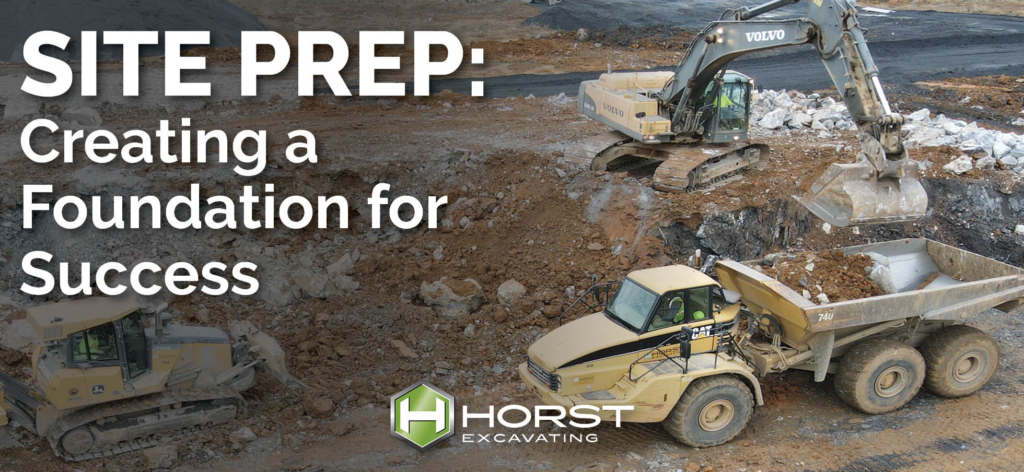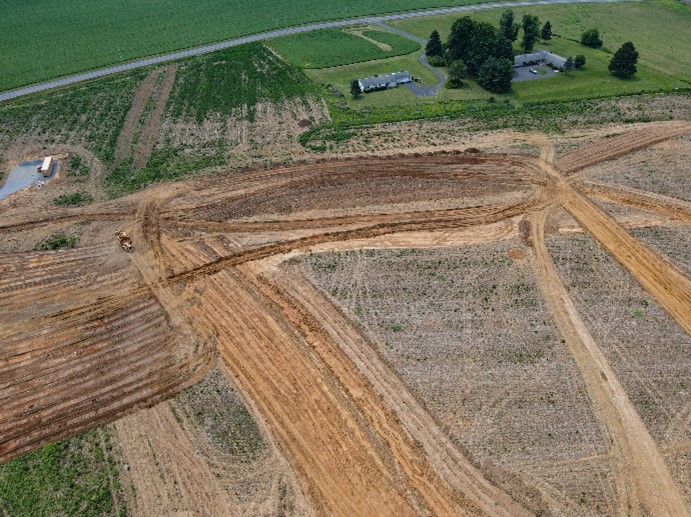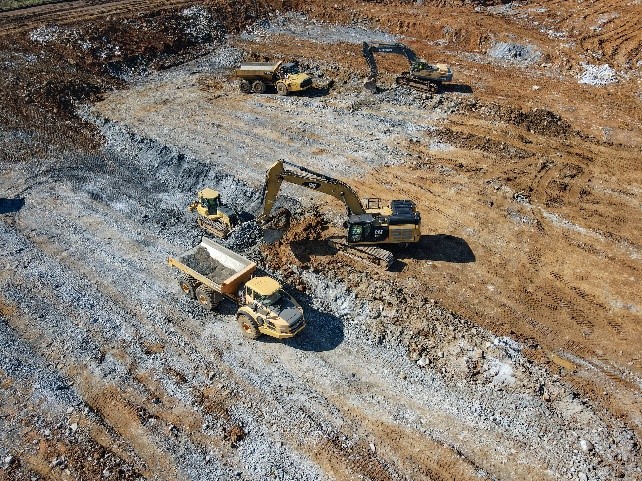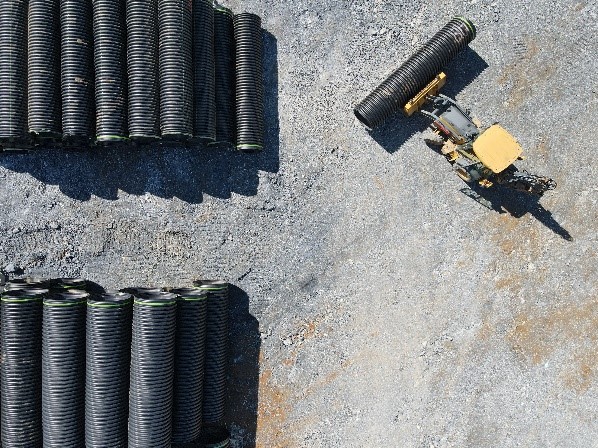Site Prep: Creating a Foundation for Success

Before the first beam is raised or block laid, a construction project starts with the preparation of the site.
The work your excavating team puts in place can set the stage for all that follows. If you partner with a team that gets it right, you’ll minimize potential issues and maximize efficiency.
Below, we outline the typical steps in this crucial process, so you know what to expect for your next building project.
1. Get to Know the Site
The first step you and your team will take is getting familiar with the site. Evaluate it in terms of what may already be there, from buildings, plants, and rocks to the soil they’re contained in. Soil testing can tell you exactly what you’re working with, giving your team the information needed to create an accurate plan for moving forward.
You’ll want to locate everything underground that could cause issues, like utility lines and large outcroppings of sub-surface rock. Once this is established, the site survey can begin, which is where a team marks off-limit areas and other obstructions to avoid when working.
2. Create a Detailed Design Plan for the Site
With all the crucial information gathered, your site designers and engineers can design the site. This will detail the overall layout of the site and project. It typically includes items such as:
- Site access points
- Temporary structures like offices and restrooms
- Construction equipment and machinery storage
- Details on grading and drainage
- Erosion control methods
- Utility plans
- Excavation, earthwork, and trenching details
- Site security
- Landscaping
With these plans in place, your crew will lay out their approach to transform the site in the most efficient way possible.
3. Prep the Site and Clear the Way

Once the site is set up, the site work crew can “dig in” as they start to clear the land. This will include the removal of any unwanted structures, vegetation, and other existing infrastructure that won’t be used on the new project. This creates a blank slate for your construction project to begin.
4. Create a Solid Base with the Right Kind of Soil
Once your site is cleared of existing structures and vegetation, the next step is to address any issues that stem from unsuitable soils. Some soils are great for construction and little work is needed for it to support a building. However, less suitable soils may need additional treatment or remediation before construction on the building can begin.
One example of this is soil stabilization, where quick lime or cement is injected into the earth to prevent it from holding water. This reduces soil swelling and shrinking. Other methods include compacting soil to ensure it’s as stable as possible and blasting and removing subgrade rock.
Learn more about how soil type affects construction projects in our article here.
5. Precision in Grading and Earthwork

Soils are removed from higher areas and added to lower areas to achieve the topography that works best for the site and for the building that will lay upon it. When done effectively, it also enhances site drainage by ensuring the proper water runoff. For both the construction process and the future life of the building, this will help prevent issues related to erosion, water accumulation, and potential foundation damage.
6. Trenching for Utilities

Your excavating team can begin trenching for these lines as the site preparation process continues. It will all depend on the specific needs and design of the site. Some projects may already have ample utility supplies running from the main line, but other sites never before developed may require more work.
Choosing the Right Site Prep Team
Site prep is a crucial step in the project process. The right approach and execution can have a ripple effect on the rest of your project, setting it up for a successful completion. On the other hand, issues at this stage could snowball, causing delays and straining budgets.
The first step you can take to ensure your site prep process goes smoothly is assembling the right team. At Horst Excavating, our partners and clients rely on us and our 60+ years of site preparation experience to create successful project foundations.
Posted February 08, 2024
